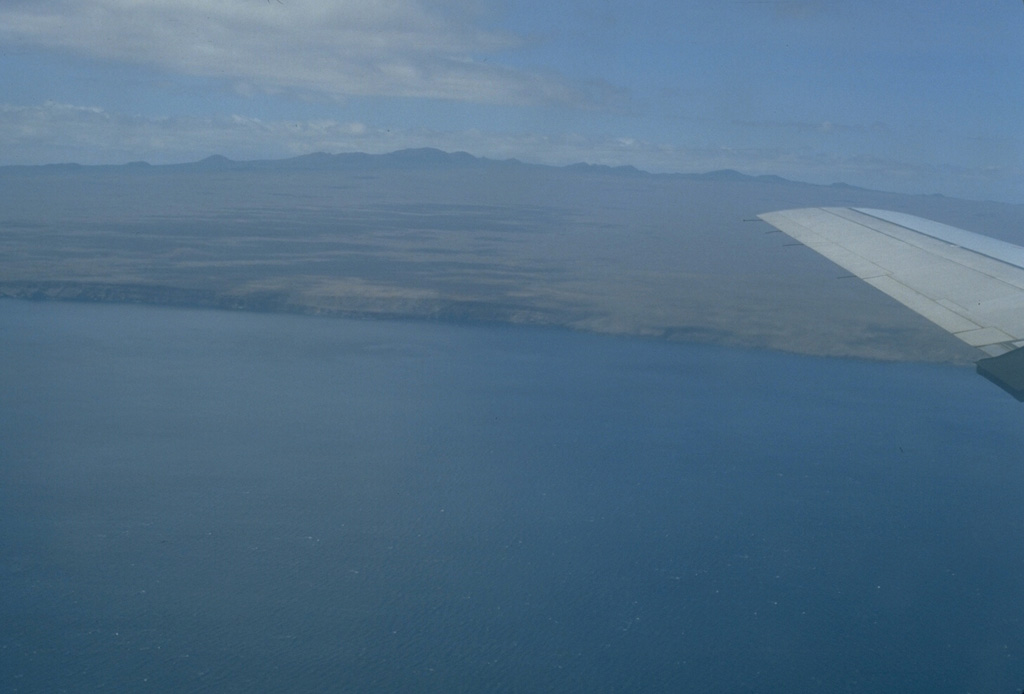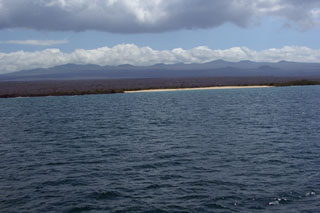Image GVP-04752

The highlands of the broad Santa Cruz shield volcano, seen here from the NE, are capped by youthful cinder cones with well-preserved craters. The scoria cones are grouped in an E-W belt parallel to recent fault scarps that border Academy Bay and largely bury a shallow summit caldera. Older uplifted submarine lava flows are found on the NE part of the island and at the fault-delimited offshore island of Baltra. No historical eruptions are known from Santa Cruz, the 2nd-most populated island of the Galápagos archipelago.
Photo by Lee Siebert, 1978 (Smithsonian Institution).
![]() This image is made available under the Public Domain Dedication CC0 license, but proper attribution is appreciated.
This image is made available under the Public Domain Dedication CC0 license, but proper attribution is appreciated.

Santa Cruz
